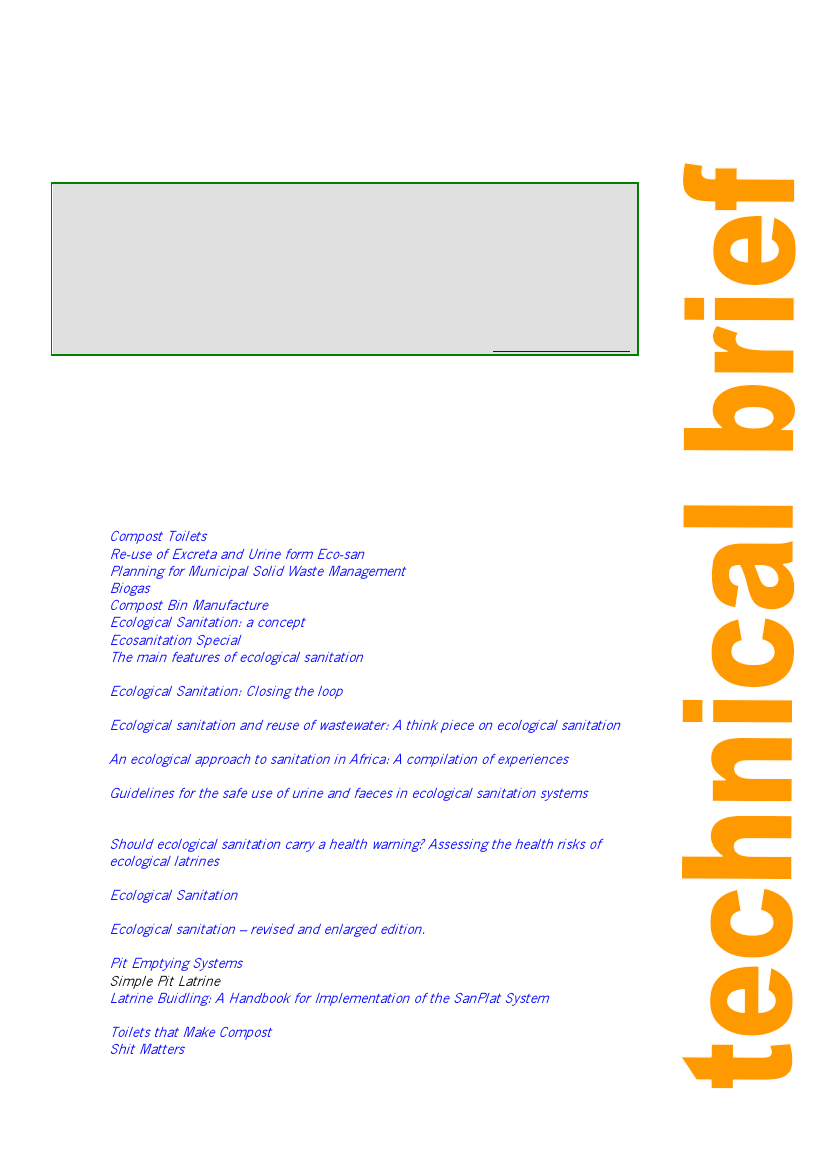
Managing organic municipal waste
Practical Action
There are other examples of partnerships, for example with universities to benefit from
innovation. The following box describes the partnership between a compost producer in
Bangladesh and two agricultural companies.
Strategic partnerships in Bangladesh
Waste Concern in Bangladesh produces many tonnes of compost each week in central Dhaka.
The market, however, is mostly based in rural areas far from Dhaka. Waste concern does not
have its own transport infrastructure, so it has formed a partnership with two agricultural
companies. MAP Agro purchases around 300 tonnes of compost from the NGO every month.
They blend some of it with chemical fertilisers, package it and sell it to Alpha Industries, an
agricultural input distribution company. Alpha Industries uses its existing transport and sales
network to sell the compost as far away as 600 km from Dhaka. These partnerships leave
Waste Concern to pursue what is good at: composting.
See www.wasteconcern.org
Conclusion
Composting can provide a solution to dealing with the most significant component of waste.
It reduces the weight and volume of waste, and produces an inoffensive, useful product.
Compost can have beneficial impacts on soil, benefiting agriculture and biodiversity and even
slowing soil erosion. Finally composting can be a profitable business activity and provide
income and employment opportunities for the poor.
Further reading and references
Compost Toilets Practical Action Technical Brief
Re-use of Excreta and Urine form Eco-san Practical Action Technical Brief
Planning for Municipal Solid Waste Management Technical Brief, Practical Action
Biogas Technical Brief, Practical Action
Compost Bin Manufacture Technical Brief, Practical Action
Ecological Sanitation: a concept Technical Brief, Practical Action
Ecosanitation Special Waterlines Vol 26 No 2 October 2007
The main features of ecological sanitation. EcoSanRes Fact Sheet 2. EcoSanRes,
Sweden.
Ecological Sanitation: Closing the loop. Esrey, Steven A. and Andersson, Ingvar
(2001) UA Magazine 3, pg 35 – 37.
Ecological sanitation and reuse of wastewater: A think piece on ecological sanitation.
Jenssen, Petter, D. et al (2004). The Agricultural University of Norway, Norway.
An ecological approach to sanitation in Africa: A compilation of experiences. Morgan,
P. (2004) Aquamore, Zimbabwe.
Guidelines for the safe use of urine and faeces in ecological sanitation systems.
Schönning, Caroline and Stenström, Thor Axel (2004). EcoSanRed Programme,
Stockholm Environment Institute, Sweden.
Should ecological sanitation carry a health warning? Assessing the health risks of
ecological latrines. Scott, Rebecca (2006) WELL Briefing note 27. WELL,
Loughborough University.
Ecological Sanitation. WELL Factsheet. Smet, Jo and Sugden, Steven (2006)
WELL, Lougborough University, UK.
Ecological sanitation – revised and enlarged edition. Winblad, U. and Simpson-
Hébert, M. (editors) (2004) SEI, Stockholm, Sweden.
Pit Emptying Systems Boot, N. (2007). Practical Action Technical Brief
Simple Pit Latrine. Chatterton, K. WEDC.
Latrine Buidling: A Handbook for Implementation of the SanPlat System Brandberg,
B. Practical Action Publishing 2002
Toilets that Make Compost P Morgan Practical Action Publishing 2008
Shit Matters Mehta and Movik Practical Action Publishing 2010
8